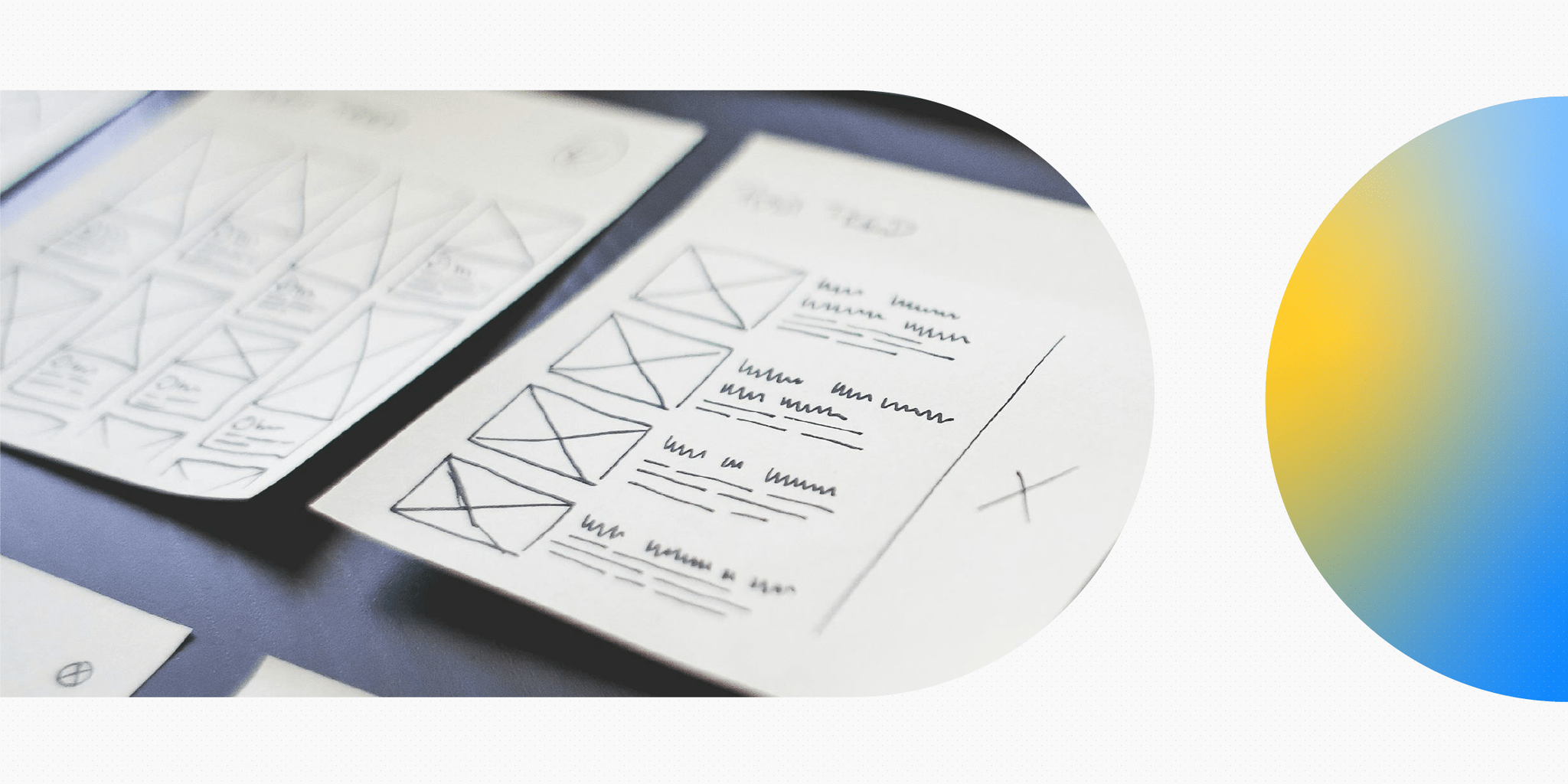Both UX bootcamps and UX courses teach user experience design. However, they can differ greatly in terms of price, duration and teaching style. They each come with their pros and cons and there’s no right or wrong option; it all depends on your personal situation, goals and preferences.
Before you decide, it’s useful to understand the difference between the two — and that’s exactly what we’ll explain in this post.
Keep reading to learn:
- What is a UX bootcamp? (Plus examples)
- What is a UX course? (Plus examples)
- What’s the difference between UX bootcamps and UX courses?
- UX bootcamps versus courses: The pros and cons of each
- How to decide between a UX bootcamp and a UX course
What is a UX bootcamp?
In a nutshell, UX bootcamps:
- Offer an intensive, accelerated way to learn UX in a short period of time
- Usually require full-time attendance for the duration
- Typically take place in person at a specific location, with some bootcamps also available online
- Combine a mixture of theory and practice
- Can be expensive compared to UX courses
A UX bootcamp is one of the most intensive, immersive options for learning UX design. Bootcamps usually take place over a short period of time, typically ranging from one to twelve weeks, at an accelerated rate — so you can expect to learn pretty much full-time for the duration.
Most UX bootcamps require live, in-person attendance. However, more and more providers are operating via online campuses, allowing you to get the bootcamp experience from the comfort of your own home. Either way, you’ll likely be learning as part of a cohort.
UX bootcamps tend to combine a mixture of theory and practice, with the goal of preparing students for employment in the industry.
As for price, it really varies from one UX bootcamp to another. Generally speaking, UX bootcamps are more expensive than UX courses. We take a look at some UX bootcamp providers and their prices in the following section.
Examples of UX bootcamps
Some popular UX bootcamps include:
- Ironhack’s UX/UI Design Bootcamp: This immersive, hands-on bootcamp spans 9 weeks full-time or 24 weeks part-time. You can attend the bootcamp online or in-person, with campuses in Lisbon, Barcelona, Berlin, Madrid, Paris, São Paulo, Miami and Mexico City. The online bootcamp costs $12,500 (around €12,760), while the in-person bootcamps cost between €6,000 and $12,500 depending on your chosen campus.
- Thinkful’s UX/UI Design Bootcamp: You’ll study with a cohort at an accelerated pace, putting in around 50 hours per week for five months. Thinkful’s bootcamp is available online and costs $12,150 upfront (around €12,400) or $2,700 month to month (around €2,760).
- Flatiron School’s Product Design UX/UI Bootcamp: This full-time bootcamp spans 15 weeks and costs $16,900 (around €17,200). You’ll learn on a fixed schedule of 8 hours per day, Monday to Friday, either online or at your chosen campus.
That’s just a handful of UX bootcamps that are available. For more in-depth insight into the above bootcamps (and others), visit their websites to learn about the curricula they offer — and be sure to browse the web for alumni reviews.
What is a UX course?
In summary, UX courses:
- Can offer a more flexible, less intensive way to learn UX design
- Lend themselves to independent study
- Usually take place online
- Vary greatly in terms of format and duration
- Can be theoretical, practical or both, depending on your chosen course
- Tend to be cheaper than UX bootcamps
While UX bootcamps are renowned for their fast pace and intensive learning format, UX courses tend to offer a steadier, more flexible alternative.
There are dozens of different types of UX courses out there and they vary greatly in terms of duration, price and how they’re taught. Some are closer to UX bootcamps in that they require attendance at set times, while others are entirely flexible. You’ll find UX courses taking place online and in-person, ranging from quick video tutorials to more intensive, long-term courses accompanied by the guidance of an expert.
One of the major advantages of a UX course is the flexibility it can offer, making it possible to learn UX design at your own pace and rhythm. This is especially important if you have a job or other responsibilities to prioritise.
Because there’s so much variety in the UX course world, it’s impossible to put an exact figure on how much a course will typically cost. Usually, the price is proportionate to what’s on offer. A free UX course will provide a great introduction but it won’t prepare you for a job in the field. A more expensive and extensive UX course, on the other hand, should offer more value in terms of equipping you for the industry.
Examples of UX courses
Some examples of UX courses include:
- The UX Design Institute’s Professional Diploma in UX Design: This university credit-rated online course takes 6 months to complete at a flexible pace, requiring around 5 hours of study each week. You’ll learn practical UX skills and build your professional portfolio. The course costs €3,500.
- Google’s UX Design Professional Certificate: This beginner-level course takes place entirely online, spanning 6 months with around 10 hours of study per week. You’ll learn via course videos and assignments and you will be assessed on an applied learning project. This course costs $39/month as part of a Coursera subscription.
- BrainStation’s UX Design Course: This part-time course is delivered via BrainStation’s live online classroom, requiring students to be present at certain times. The course spans five or ten weeks depending on your chosen format, with classes ranging from 3 hours to 7 hours (again, depending on which pace you choose). The BrainStation course costs $3,250 (around €3,320).
Once again, we’ve provided just a snapshot of some of the best UX courses. Do your research and you’ll find that there are hundreds of options out there to suit all levels and requirements. You’ll also find a selection of the best free UX courses here.
What’s the difference between UX bootcamps and UX courses?
The main difference between UX bootcamps versus courses is the level of intensity — and, as a result, the degree of flexibility they offer.
Bootcamps usually require you to be present (either online or in person) on a full-time basis over a set period of time. Courses generally provide more flexibility in terms of when you work through the course materials and may take longer to complete.
Another distinguishing factor is price. UX bootcamps tend to be more expensive than UX courses — although that’s not to say that there aren’t some expensive courses out there, too. It ultimately depends on the provider you go with, but if you’re working with a smaller budget, you’ll probably be looking at a UX course rather than a bootcamp.
You may be wondering if there’s a difference between UX bootcamps and courses in terms of credibility. Do employers favour bootcamp grads over those who’ve done a course? Or vice versa?
The short answer is no. One option isn’t inherently considered more credible than the other. What it really comes down to is the credibility of the school or provider who’s running the bootcamp or course and the quality of the content and instruction provided.
Whether you opt for a bootcamp or a course, look out for those offering a professional certificate of completion. This will provide easily recognisable proof of your attendance and your new skills. And, if you’re learning UX with the goal of landing a job in the field, choose a bootcamp or course that includes a portfolio-building element.
Your UX portfolio will be your biggest asset when it comes to demonstrating your ability and impressing employers, so you’ll have a huge head start if you can create one as part of your course or bootcamp.
Those are the main differences between UX bootcamps and courses. Now let’s weigh up the pros and cons of each.
UX bootcamps versus courses: The pros and cons of each
How do UX bootcamps and courses compare? Here are the pros and cons of each at a glance.
The pros and cons of a UX bootcamp
Some of the main advantages of a UX bootcamp are:
- You can learn UX design in a short space of time, fast-tracking your route into the industry
- You’ll usually learn with a cohort, allowing you to be part of a community and benefit from the support and encouragement of your peers
- UX bootcamps are usually very practical, meaning you should come away with hands-on skills and be ready to work as a UX designer
Some of the drawbacks of a UX bootcamp are:
- They can be expensive compared to other options on the market (such as UX courses)
- They’re usually not as flexible, so you may not be able to attend if you’re already working
- UX bootcamps can be intense! This can be a positive thing, but prepare for a heavy workload
The pros and cons of a UX course
The main benefits of a UX course are:
- They tend to be more flexible in terms of schedule and pacing, so you can study when it suits you while keeping on top of other responsibilities
- UX courses generally aren’t as expensive as UX bootcamps and there’s much more variety in terms of price
- UX courses come in all different shapes and sizes, so you’ll be spoiled for choice when it comes to finding a format that suits you
Some potential disadvantages of a UX course are:
- They may take longer to complete, so you can’t expect the same rapid progress as you might with a UX bootcamp
- The UX course market is extremely crowded and not all UX courses are of good quality. Finding a credible UX course will require thorough research
- If you’re learning independently, you may miss out on the support of your peers. However, for some students, this won’t be an issue. It all depends on your personal preference!
How to decide between a UX bootcamp and a UX course
So, should you do a UX bootcamp or would a UX course be a more suitable option?
While we can’t answer that question for you, we can provide some guidance to help you decide. Ultimately, it depends on your goals, how you’d like to learn and what kind of budget you have at your disposal.
Before you choose one or the other, ask yourself the following questions:
- How much time am I able to spare for my UX bootcamp or course? Am I in a position to learn intensively on a full-time basis or do I need something that fits around my job and/or other responsibilities?
- Why do I want to learn UX design? Do I want to get hired as a UX designer, am I learning for fun or do I want to expand my current skill set without necessarily changing jobs?
- Do I want to learn online or attend in-person classes? And what kind of schedule is realistic? Am I able to attend classes at set times or do I need more flexibility to determine my own rhythm?
- What’s my budget? Can I afford a UX bootcamp (and is it necessary with regards to my goals) or am I looking at a lower price point?
- How sure am I that I want to learn UX design? Should I perhaps dip my toe in with a free course first or am I ready to take the plunge and invest in a proper course or bootcamp?
And, whether you opt for a UX bootcamp or a UX course, the same golden rule applies: Do your research. Find the bootcamp or course that best suits your goals and ensures a high quality, industry-approved learning experience.
Taking a UX bootcamp or course is just one step towards a career in UX. For more insights and advice, continue with this beginner’s guide on how to learn UX and get started in the field.




